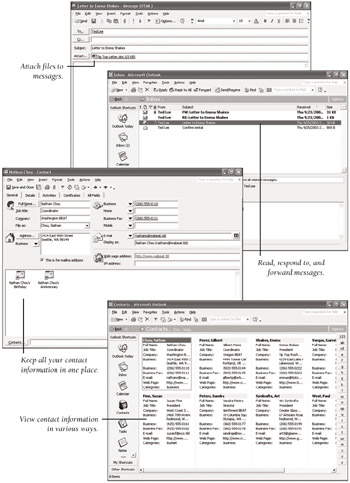Chapter 10: Managing E-mail and Contacts with Outlook
Overview
Microsoft Outlook is widely used for sending and receiving e-mail messages, but it can also be used to manage all sorts of personal and work-related information in a single, clearly organized location. Gone are the days when you needed separate address books, appointment books, and notebooks . In the next two chapters, we show you how to make everyday tasks ”sending e-mail messages, scheduling meetings, or tracking tasks and projects ”as efficient as possible. Because e-mail is likely to be the component you ll use most, we ll first go over basic concepts related to sending and receiving messages. Then we ll show you how using Outlook s contact list helps streamline activities performed in other Outlook components .
When you have finished with this chapter, you will know how to:
-
Open Outlook
-
Create and send messages
-
Read and respond to messages
-
Manage messages
-
Create contact information
-
Manage contacts

EAN: N/A
Pages: 116